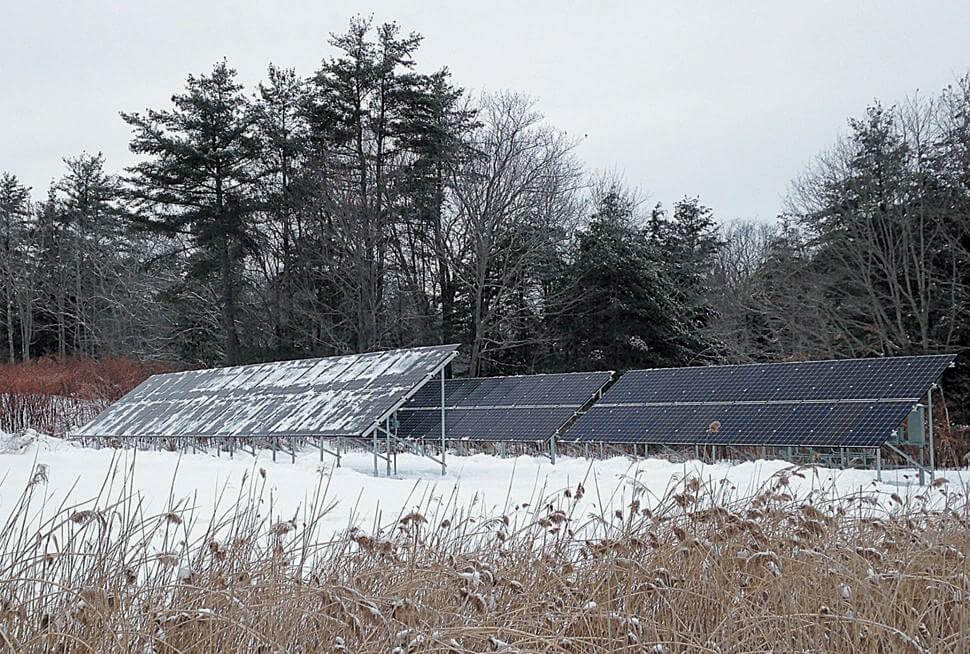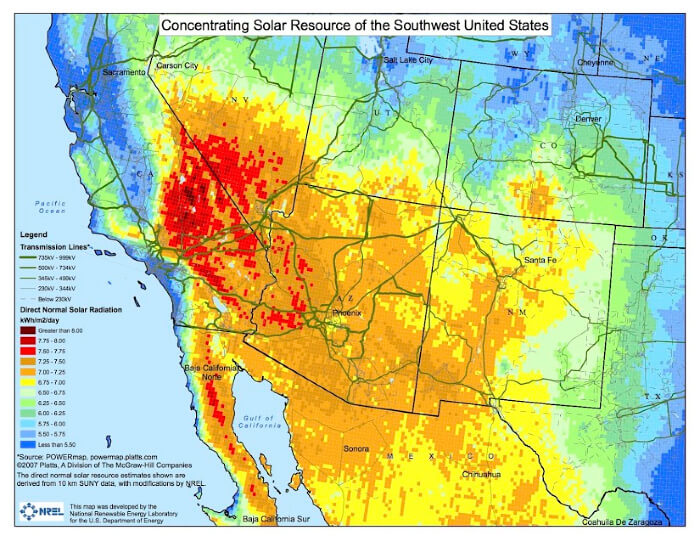Are you doing a solar project?
Modernize can pair you with three to four pros in your area, so you can compare options and save time and money.
Assessing contractor quotes is an important step in the journey to increase the value of your home with solar panels. Evaluating multiple solar panel quotes helps homeowners scope their budget and encourages contractors to be competitive with their pricing, which is especially significant in today’s solar energy market. It’s important to understand your project’s unique parameters when sifting through these estimates. One such unique marker is your house’s solar irradiance. Simply put, this defines the exposure to sunlight you can expect where you live. This exposure, along with several external factors, will have important ramifications on the type of solar panels, mounts, and equipment required for your home improvement.
Having a solid understanding of these basics will help you understand your solar installer’s quote and enable you to have an informed foundation from which to discuss the project. Be sure to communicate honestly with your contractor about your needs and concerns when it comes to the shade at your house.
Do Solar Panels Work In Shade?
Short answer: Yes, of course. Shade doesn’t stop the solar panels for your home from doing their job.
Excessive shade can, however, reduce the amount of energy a solar panel system is able to generate. While solar panels are designed to operate in all weather conditions (including the winter, which is actually a great time to install them), external factors like trees or buildings might impact their efficiency. Since rooftops are popular placements for solar panels, their size, shape, slope, and age will factor into their fitness to support solar energy. For example, solar panels typically “perform best on south-facing roofs with a slope between 15 and 40 degrees,” according to the Department of Energy. Ask your experienced contractor to assess the current and potential shade your house will experience and plan accordingly—there are many ways to deal with shade.

The solar farm in Woolwich, ME, missed its 2018 solar energy projection partly because of the shade cast by four maple trees. (Nathan Strout / The Times Record)
Take the Woolwich solar farm in Maine, for example. It barely missed its projected energy generation for 2018, but city officials remained optimistic. Why? They were able to identify the main culprit: four maple trees. And that obstacle has an easy fix: “The town is looking into cutting those trees down to ensure that all of the panels get the maximum amount of sunlight,” the local Times Record reported.
When it comes to choosing who will install your solar paneling, it’s important you find a local and trustworthy contractor who will meet with you in-person and on-location. Request your solar panel installer to appraise your property and identify areas of concern.
Additionally, a local contractor will know the climate and weather conditions your location experiences.
How Many Solar Panels Do I Need?
While a roof is a popular option for solar panel installation, there are other options.
Before determining what kind of and how many solar panels you want, it’s good to understand the type and amount of solar energy present at your location. Various public resources are at your disposal to do just that. The National Renewable Energy Laboratory, for example, created a map showing the concentration of sunlight radiation across southwestern states like California, Nevada, Arizona, New Mexico, Utah, and Colorado. How red is your region?
Find the Right Contractor for Your Solar Project
Whether you’re ready to begin your project now or need some expert advice, our network of contractors are here to help. With a few simple questions, we’ll find the best local professionals for you

Concentration Solar Resource for Southwestern US. National Renewable Energy Laboratory.
Another more specific example comes from a UC-Berkely National Laboratory team. The group examined when during the day they could expect to find solar panels in shade. They tested Californian cities Sacramento, San Jose, Los Angeles, and San Diego, and determined those time ranges to be:
- In the morning from 6 to 10 a.m.
- In the afternoon from 2 to 6 p.m.
On an annual basis, the researchers determined, panels were only affected with a 20-percent decrease at peak shade. Want to know more about your own location and its irradiance properties? Use the Department of Energy’s calculator tool, which asks you for your address and spits out the solar energy you can expect.
A local contractor will be able to explain what you should expect in terms of energy and how you can expect it to increase the value of your home, not to mention what kind of panels you will benefit the most from, and where they should get installed. At Modernize, we frequently speak to homeowners about their home improvement projects. In our recent interviews, 90 percent of homeowners requested a checklist to help them find and vet contractors. Modernize now offers homeowners a free, digital Contractor Checklist as a simple, step-by-step guide to assist with your solar panel project.
What Are My Solar Tracking and Mounting Needs?
While trees, power lines, neighboring structures, and far-away mountains can all cast shadows on your house, don’t forget the sun’s movement also governs the movement of this shade throughout the day.
For best solar paneling positioning, various technologies track the sun’s movement and react to it. According to the Office of Energy Efficiency & Renewable Energy, “rack mounting is currently the most common method because it is robust, versatile, and easy to construct and install.”
Solar tracking systems are add-ons to solar mounts that are designed to help turn the panels to face directly at the sun throughout the day. With 90 percent of the sun’s energy in the direct beam of light that it produces, this direct beam can only be captured completely by a panel facing right at the sun. The farther the panel is tipped away from the sun, the less efficient it is. This results in even carefully installed static—that is, fixed position—solar panels operating with nearly 50 percent to 75 percent efficiency losses at some point during the day. Solar trackers can help salvage those hours when the sun just isn’t shining directly on the panels like it needs to be.
While solar roof panels typically track the sunlight and swivel to keep the panels oriented properly, they could be expensive and difficult to install. In contrast, pole-mounted or ground-mounted units can offer similar benefits at a lower installation price. A ground mount is a durable frame that mounts right to the ground on your property. This frame is designed to hold a specific number of solar panels, which depends on the frame. A pole mount is a durable rack or frame built to hold a set of solar cells that are mounted up on top of a single pole. One well-installed pole is capable of holding a surprisingly large number of solar panels—at times, up to as many as sixteen. In other words, your roof is not your only option.
“Naturally, tracking involves more up-front costs and sophisticated systems are more expensive and require more maintenance,” the Department of Energy reports. “As systems have improved, the cost-benefit analysis increasingly favors tracking for ground-mounted systems.”
As before, the best way to determine which of the mounts you want for your property, and which are best poised to increase its value, you should consult a trustworthy contractor. Be sure to get an in-person assessment from your contractor, allowing the installer to suggest options and explain potential benefits and, sometimes, challenges. Either way, a local expert will help you get the most of your home improvement project, no matter the season.
Find the Right Contractor for Your Solar Project
Whether you’re ready to begin your project now or need some expert advice, our network of contractors are here to help. With a few simple questions, we’ll find the best local professionals for you
Reviews from Real Homeowners
Welcome to Homeowner Resources! We are the Modernize blog. Modernize pairs more than 3 million homeowners a year with pre-vetted contractors in their area. This blog started because we believe homeowners should know everything about their homes, from how their HVAC works to which front door colors they might love. On Homeowner Resources, you can find information on every part of your home, right down to how you can negotiate with contractors to get the best price. Here's more about the blog.
Need a contractor? Learn more about how Modernize finds the right pro for you.


